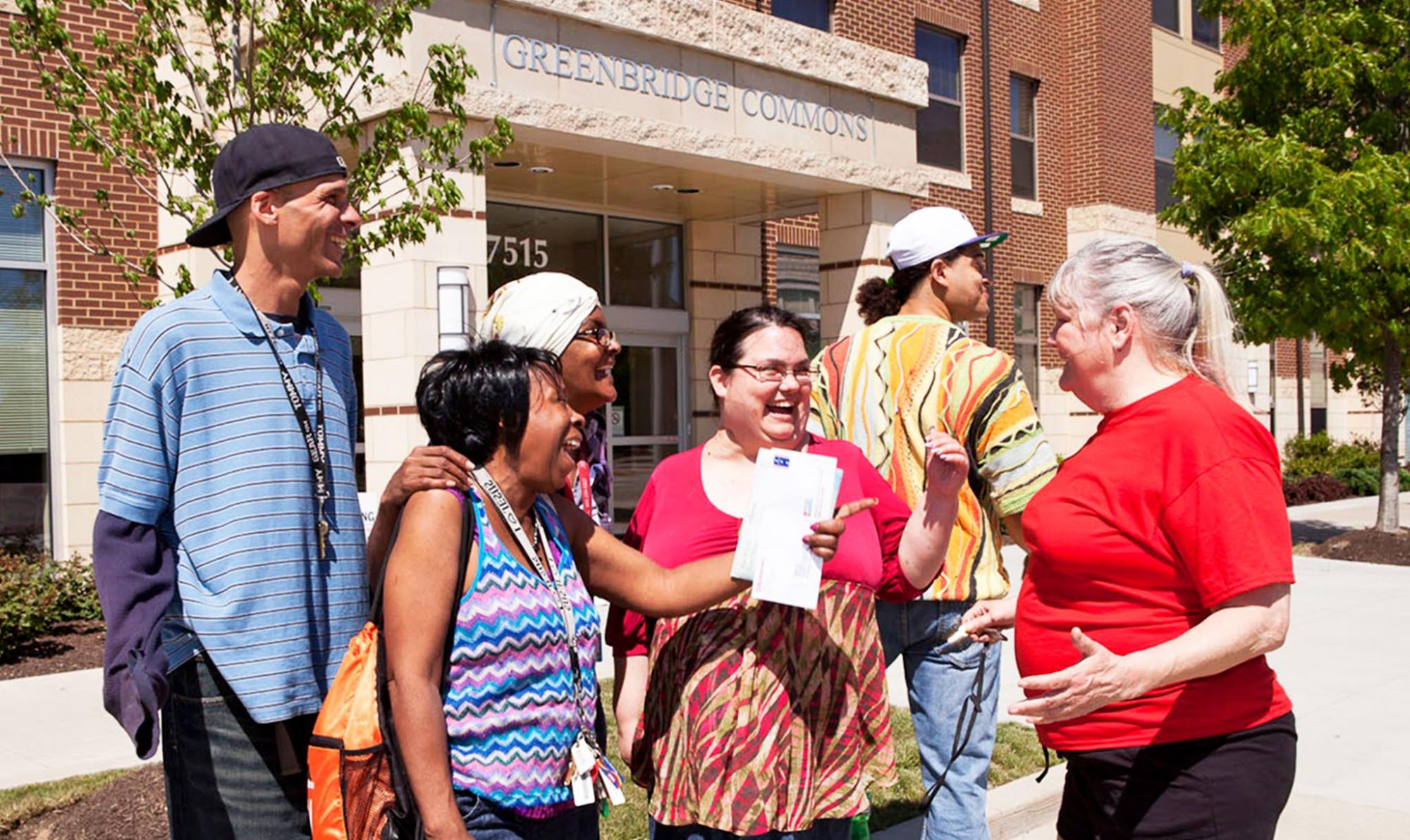Assess Existing Conditions
Approaches, Considerations and Resources
SETTING GOALS FOR AN ASSESSMENT
Before starting an assessment, it is important to connect goals for the assessment with the larger body of work it will inform. Goal setting provides a needed focus, enabling organizations to collect and analyze information that is most relevant to the intended purpose. Without considering specific goals in advance, assessments can incorporate unnecessary information and become too unwieldy for analysis.
Goals for an assessment focused on housing and education might include the following:
- Researching how socioeconomic and racial disparities vary across schools or neighborhoods to help define a target population or geography for cross-sector work.
- Identifying the neighborhoods within a city or region that are most at risk of evictions, displacement or gentrification, which may have corresponding impacts on school enrollment.
- Exploring the reasons for high rates of student mobility at a particular school or within a school district, which may have underlying causes related to housing.
ENGAGING THE COMMUNITY
When assessing existing conditions, even if relying on resources that already exist, it is critical to consider the input of those who live and work in the communities of focus. Community engagement is ideally initiated at the start of an assessment process, helping to inform both the direction and content of an assessment. It may be helpful to consider engagement along a continuum ranging from informative, in which community members are made aware of the objective of the work, to empowering, in which community members have a direct role in decision-making.21
Engagement can generate valuable information that organizations may not otherwise have access to, allow comparison between community input and research findings and lay the groundwork for an ongoing relationship with the community. Surveys, focus groups, participatory asset mapping, systems mapping, community charettes and a public forum on a particular issue are all examples of proactive community engagement. Engagement strategies are explored in more depth in Stage 2.21 International Association for Public Participation. “IAP2 Spectrum.” 2015. iap2usa.org/resources/Documents/Core%20Values%20Awards/IAP2%20-%20Spectrum%20-%20stand%20alone%20document.pdf
ASSESSING EXISTING CONDITIONS
An assessment of existing conditions can take a variety of forms, depending on the context and availability of information. Assessments may include quantitative data, such as census demographics or data from a school district, or qualitative information gained through interviews, document review or community engagement. Considering data disaggregated by race is strongly recommended, when possible, to better understand disparities and target equity-focused work accordingly.
Comprehensive Assessments
Housing and education organizations may consider a wide range of topics when assessing existing conditions, with the goal of gaining a comprehensive understanding of a community’s strengths and challenges. A comprehensive assessment is useful when initiating work in a new area or when seeking a fresh look at the local context to identify possible focus areas for future work.
Before undertaking an assessment, it is useful to consider the target geography or scale of the analysis — such as a neighborhood, school district or county — as this ultimately will determine the types of data and information that can be collected. An assessment also can include a comparison with information about other geographic areas, such as city- or state-level data, to provide context.
Questions that organizations can consider to better understand challenges in their community include the following:
- Demographic: Who lives in the area of focus (consider such characteristics as age, sex, race/ethnicity and family size)? Has the population in this community changed in recent years? Do resident perceptions of recent demographic changes reflect trends from quantitative data sources? Where do children in this area live and go to school?
- Economic: What percentage of households are living below the poverty line, and how have poverty levels changed over time? What is the median household income in this area? What is the employment rate? Who are the largest employers in the area, and what are the most common types of jobs?
- Education: Are high-quality and affordable early education and child care facilities available? How are public schools performing in the area of focus? Are schools over- or underenrolled? What is the educational attainment of the local population?
- Housing Market: What housing options are available in the local market? What percentage of households are cost-burdened (spending more than 30 percent of their income on housing)? What is the breakdown between households that rent or own their home? What is the rate of homelessness in the area, and how has it changed over time?
- Neighborhood: Are there disparities in transit service levels by neighborhood? What are average commute times to work? What is the neighborhood’s Walk Score or Bike Score? What is the proximity to food retail, such as grocery stores or farmers markets? Where are the parks or public recreation facilities, and how are they used?
- Community Leadership and Vision: What organizations are leading work in the area of focus, and what is their approach to housing and education? Who are the formal and informal community leaders? What is their perspective on the key assets and challenges in the area? Have local organizations already established goals for their work?
Issue-Focused Assessments
Unlike the breadth of a comprehensive assessment, an issue- focused assessment investigates the underlying causes of one salient issue, such as family homelessness, evictions or high school graduation rates. An issue-focused assessment is useful for organizations or partnerships that already have identified a critical community challenge they want to better understand. Examples of issue-focused assessments are included in Appendix E, under resources for Stage 1.
RESOURCES FOR ASSESSING EXISTING CONDITIONS
An important step in assessing community conditions is to identify existing resources that can provide valuable insight. The following list includes suggestions of resources for housing- or education-focused assessments.
- Strategic and Consolidated Plans: Strategic plans or vision documents created by local government, nonprofit organizations or anchor institutions, such as universities or hospitals, can be a helpful way to understand local conditions and goals. States and local jurisdictions that receive federal funding often are required to create consolidated plans, which are public documents that assess needs and challenges. These plans offer valuable context on local data and decision-making. Examples of sources for consolidated plans include the following:
- Community Planning and Development Consolidated Plans, Annual Action Plans, and Consolidated Annual Performance and Evaluation Reports | Department of Housing and Urban Development: To qualify for numerous HUD funding streams, states and local jurisdictions submit reports and plans that offer useful information on local community development needs and housing market challenges.
- Every Student Succeeds Act (ESSA) State Plans | Department of Education: Under the ESSA, states are required to submit to the U.S. Department of Education consolidated plans that include goals for student achievement and data on student populations.
- Local or Regional Data: Local or regional data may be available online in indices, dashboards or databases and may be hosted by school districts, universities or local research centers, for example. These resources can be helpful for understanding local goals and identifying data sources and possible partners. Examples of such data sources include the following:
-
Information and Data Overview | New York City Department of Education: New York City’s Department of Education offers a website that includes a variety of data at the school and district levels and features test
and graduation results, attendance data, demographic information, and other relevant surveys and reports. This website is a useful example of the types of local data that an organization might seek in answering important questions about students and families. -
Housing Market Indicators Data Portal | Institute for Housing Studies at DePaul University: DePaul University’s Housing Market Indicators Data Portal offers a detailed look at housing data in the Chicago region, ranging from types of housing stock to foreclosure filings, which can be explored by geography. This level of detail
can be useful for understanding the housing characteristics of a given area, which can help determine appropriate strategies for stabilizing families through housing. - Urban Displacement Project | University of California, Berkeley: The Urban Displacement Project maps the areas in the San Francisco Bay Area that are experiencing displacement, characterized as low-income or moderate- to-high income census tracts. Many cities or regions facing displacement pressures have started to look more closely at the data that indicate the vulnerability of their populations and neighborhoods, which allows users to identify areas that may need targeted anti-displacement strategies.
- National Data: National data sets on housing and education, hosted by national nonprofits or federal agencies, are widely available and often contain local or regional data in the form of online databases or downloadable reports. Suggested national data sources that can be helpful resources in conducting an assessment are described in Appendix E, under resources for Stage 1.
BUILDING ON AN ASSESSMENT
When completing an assessment, it is helpful to revisit the initial goals and carefully consider the key findings that have emerged. Assessments often reveal gaps in knowledge that may reveal potential partnership opportunities or the need to engage in additional research or community engagement for a more nuanced perspective on the local context. Whenever possible, sharing the findings of an assessment is a powerful way to broaden knowledge and engage with the community.
The following are examples of wide-ranging community needs assessments, published formally as written documents. Other methods of sharing assessments publicly might include short briefs, memos or presentations at community meetings.
- Alexandria, Virginia – Community Needs Assessment | 2019 Economic Opportunities Commission: The Economic Opportunities Commission of Alexandria, Virginia, submits an annual needs assessment to the State of Virginia as part of the city’s Community Services Block Grants obligations. The needs assessment covers four key areas: affordable housing, food security, child care and health care. Findings are based on a community survey administered to residents living below the poverty line.
- City of Tacoma, Washington – Community Needs Assessment | City of Tacoma, Washington: The City of Tacoma’s August 2016 community needs assessment focuses on three primary topics: homelessness and household stability, workforce development, and human and social wellness. The assessment pulls information from previous city plans and policies, local and national data sources, and stakeholder interviews with city staff.


